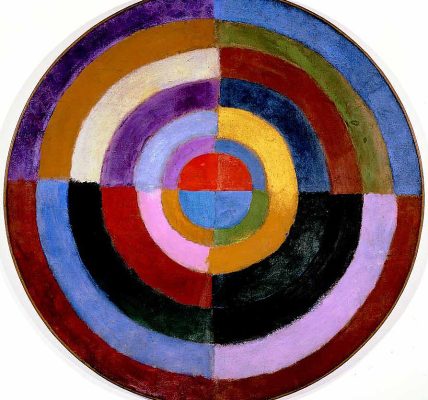Abstract art, with its diverse forms and elusive meanings, has captivated audiences for generations, challenging viewers to explore the boundaries of perception and interpretation. Among the vast array of abstract artworks that have left an indelible mark on the art world, one piece stands out as an iconic symbol of artistic innovation and creative expression. In this article, we’ll delve into the enigmatic world of abstract art to uncover the most famous piece, examining its origins, characteristics, and enduring significance.
The Birth of a Masterpiece:
The most famous piece of abstract art is none other than “Composition VIII” by Wassily Kandinsky. Created in 1923, this monumental canvas embodies the essence of Kandinsky’s artistic vision and philosophical beliefs, representing a culmination of his lifelong exploration of color, form, and spiritual symbolism.
Born out of the tumultuous cultural and political climate of post-World War I Europe, “Composition VIII” reflects Kandinsky’s deep-seated belief in the transformative power of art to transcend reality and evoke emotional and spiritual truths. As a pioneer of abstract art and a leading figure of the Bauhaus movement, Kandinsky sought to liberate painting from the constraints of representation and embrace pure abstraction as a means of expressing inner experience and universal harmony.
Characteristics of “Composition VIII”:
“Composition VIII” is characterized by its dynamic composition, vibrant colors, and complex interplay of geometric shapes and forms. At first glance, the canvas may appear chaotic and disordered, with overlapping shapes and intersecting lines creating a sense of movement and energy. However, upon closer inspection, a sense of underlying order and harmony emerges, revealing the meticulous planning and careful balance of the composition.
One of the defining features of “Composition VIII” is its use of color as a primary means of expression. Kandinsky believed that colors possessed inherent spiritual and emotional qualities, and he carefully selected and arranged hues to create a visual symphony that resonates with viewers on a deep, subconscious level. From the fiery reds and oranges that evoke passion and energy to the serene blues and greens that evoke calmness and tranquility, each color in “Composition VIII” serves to convey a specific mood or emotion.
Another characteristic of “Composition VIII” is its innovative approach to form and space. Kandinsky rejected traditional perspective and spatial conventions in favor of a more intuitive and fluid approach to composition, allowing shapes to overlap and intersect freely across the canvas. The result is a sense of depth and dynamism that invites viewers to explore the painting from multiple vantage points and perspectives.
Interpreting the Meaning:
Interpreting the meaning of “Composition VIII” is a deeply personal and subjective endeavor, as each viewer brings their own unique experiences, emotions, and associations to the artwork. Kandinsky himself was reluctant to provide specific interpretations of his abstract compositions, preferring to allow viewers to engage with the paintings on their own terms and draw their own conclusions.
That being said, many art historians and critics have offered various interpretations of “Composition VIII” based on its formal qualities, thematic motifs, and historical context. Some see the painting as a reflection of the chaos and uncertainty of the interwar period, with its fractured forms and discordant colors mirroring the upheaval and fragmentation of society in the wake of World War I. Others interpret the painting as a visual representation of Kandinsky’s spiritual beliefs, with its swirling shapes and vibrant colors symbolizing the transcendent power of the human spirit to rise above adversity and achieve inner harmony.
Legacy and Influence:
“Composition VIII” has left an indelible mark on the history of abstract art, inspiring countless artists, critics, and viewers with its bold experimentation and expressive power. Its innovative approach to color, form, and composition has influenced generations of artists across disciplines, from painters and sculptors to architects and designers.
Moreover, “Composition VIII” continues to serve as a touchstone for contemporary artists who seek to explore the boundaries of abstraction and push the limits of artistic expression. Its enduring relevance and timeless appeal attest to the universal themes and emotions that lie at the heart of abstract art, reminding us of the power of creativity to transcend language, culture, and time.
“Composition VIII” by Wassily Kandinsky stands as the epitome of abstract art, embodying the artist’s revolutionary vision and profound belief in the transformative power of color and form. Through its dynamic composition, vibrant colors, and complex symbolism, the painting invites viewers on a journey of exploration and discovery, challenging them to embrace the beauty and mystery of the abstract world. As we contemplate the enigmatic beauty of “Composition VIII,” we are reminded of the enduring power of art to inspire, provoke, and enlighten, transcending the boundaries of perception and imagination.



